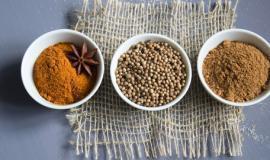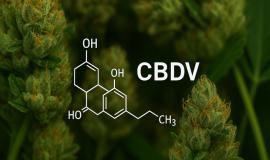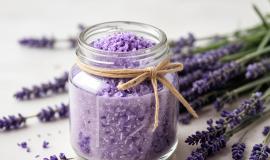Cooking with Cannabis Part 3. Everything You Need to Start Plus Tips & Tricks
There is currently plenty of edibles and other cannabis products available at dispensaries with new ones popping up every month.
There are several steps in making your own infused product:
1. Picking the right raw material.
2. Decarboxylating the flower.
3. Making canna butter or oil.
4. Finding the right recipe and creating your infused product.
Raw Material
You can go for buds or you can use shake. The most important thing is buying it from a licensed and trusted dispensary. This will ensure quality, potency testing, and purity of your raw material. At Silver Stem all plants are grown in soil and are hand trimmed and cured. Our product is thoroughly tested to ensure there are no pesticides and that it is up to the highest standards.
What is Decarboxylation?
This is an important step. The raw flower does not contain the cannabinoids most people seek in cannabis - THC (the psychoactive part that provides the “high”) and CBD (the cannabinoid with a wide range of health benefits). What it has are mostly THCA and CBDA that are not bioavailable. Turning THCA and CBDA into THC and CBD is called decarboxylation. It is mostly done through heating the product. It occurs when you smoke or vape your flower. But if you add raw flower to your edibles the process will not take place in your digestive system so it needs to be “activated” beforehand.
There are a number of ways to go about it. You can use our recipes for making cannabutter or cannabis infused oil, where decarboxylation is part of the process or you can do a preliminary decarboxylation and then infuse the flower with oil, butter or just turn it into flour.
How to Decarboxylate Cannabis
Grind your flower and place it in an oven preheated to 225° F in a baking tray over parchment paper. When you see the flower get brown, cover it with aluminum foil. Bake for a total of about 90 minutes for high THC and for 2 hours to get high CBD material.
If you cook it for too long or turn up the temperature too high, your THC will turn into CBN - a beneficial cannabinoid with strong drowsiness effects but definitely not what we want here.
The decarboxylation also occurs over time - partially during curing and then over the course of a prolonged storage.
Now follow the instructions above to make infused oil or butter or simply grind it to flour and use it as a substitute in your cooking.
Cooking
Now that you have created your own infused product, the next step is finding the right recipe. There are thousands of recipes for cookies, salads and so on. Or you can just pick one of your favorite ones and make it a bit more exciting by substituting one of the ingredients with the freshly made flour, oil or butter infused with marijuana.
Tips & Tricks
And now, here are some important tips and tricks to remember for your next cannabis cooking session:
1. You may try cooking at a bit lower temperature but for a bit more time to preserve terpenes or add non-decarboxylarted flower at the end to retain the flavor and so on.
2. Try making cannabis infused oil with pre-decarboxylation and without it (i.e. it occurs during infusing) and see what works best for you.
3. Do not go over 245°F - it will ruin the product and turn your THC into CBN.
4. Mix your cannabutter thoroughly
5. Define the potency by testing out just a bit of the infused product.
In our next article, we will share some of our favorite recipes for cooking with cannabis so make sure to subscribe to our newsletter and you will never miss another exciting article or a great deal from Silver Stem!
Health Disclaimer: The information provided in this article is for educational purposes only and should not be taken as medical advice. Always consult with a qualified healthcare provider before using cannabis, particularly if you have pre-existing conditions or are taking medication.






















